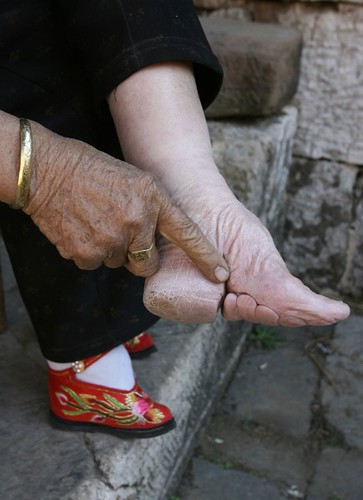A look at some traditions that you would probably consider strange, but are perfectly normal to the believers and practitioners.
The Eunuchs of India (Hijras)
The eunuchs, also known as the “impotent ones” or Hijras, are men and boys who have been castrated through a genital reassignment surgery where the penis and testes are removed. This process is usually done through unsophisticated means, without the use of anesthesia or antibiotics. Some of the Hijras go through this process voluntarily while others are forced into it. The “lucky” ones are the intersexual ones, who do not have to go through any surgery to become Hijras.
This tradition has been in India for generations and as of 1990, studies say there were 50,000 Hijras. Their exact number today is unknown but they still live in some parts of India, Pakistan and Bangladesh.
Modernization of the Indian society has, however, reduced their chances of getting decent jobs and some have turned to prostitution as a means of livelihood.
Another similar tradition occurred in China, before the Sui Dynasty, where eunuchs worked with the Imperial Service and gained a lot of power in the society.
The Sati Culture in India
Sati is an ancient culture that existed amongst the Hindus in India, where a woman would burn herself on her dead husband’s funeral fire. It was considered an honorable act and widow was believed to enter straight into heaven, as a reward for her sacrifice. She became a goddess and statues were built in her honor.
The act was banned by the British Government, but in the late 1980s, an instance was reported. Another case was also reported in 2002.
The Prevention of Sati Act now makes it illegal to aid, glorify or commit Sati. All offenses are punishable under the law.
The Fulani Sharo Tradition
“Sharo” means flogging. It is a public ceremony that demonstrates to the society that a young man has come of age, and may take a wife. The young participant is continuously whipped by someone else, called a challenger, but he must show no signs of pain. Blood and injuries are usually sustained. Many have died in this ceremony and survivors are deemed courageous.
The tradition is common amongst a group of people known as the Fulanis and they can be found in Mali, Cameroon, Niger, Nigeria and some other parts of Africa.
Chinese Foot Binding
This was an ancient and extremely painful tradition practiced by the Chinese. An estimated 5 billion chinese women were subjected to excruciating pain in a bid to make their feet look elegant.
From as little as the age of four, a young girl would have her feet bound tightly with bandages by elderly women. These bandages were kept on, but were changed regularly and increasingly tightened. The general aim of foot binding was to keep the foot at a desired size of 3-4 inches.
After years of agonizing pain, toe deformation and tight bandages, the girl would end up with a pair of tiny, folded feet.
 Some of the women, who didn’t die in the process from infections like gangrene, lost the convenient use of their toes.
Some of the women, who didn’t die in the process from infections like gangrene, lost the convenient use of their toes.
Despite the fact that walking and running were almost impossible for these women, those who didn’t take part in the tradition were deemed disrespectful. They were ostracized and it was difficult for them to find husbands. Their toes were considered ugly and unattractive.
Even though the tradition was outlawed, it still continued until the 1930s.
Even though the tradition was outlawed, it still continued until the 1930s.
Well here it is, if you like my article then plzzz share and comment for more info. stay tuned, thank you....






No comments:
Post a Comment